Trouble Ticketing Software: Benefits, Tools, and ROI Analysis

Table of contents
A customer reaches out with a technical issue. They’ve been stuck for hours, possibly days, waiting for a response. The last thing you want is for them to feel ignored or lost in a sea of emails.
This is where trouble ticket software helps. It streamlines support processes and makes sure that every customer query is acknowledged and handled efficiently.
In this blog, we’ll explore trouble ticket software, the top tools available, and how to calculate its ROI for your business.
Table of Contents
- What is Trouble Ticket Software?
- 10 Best Trouble Ticketing Software for 2025
- Key Features of Modern Trouble Ticket Software
- Trouble Ticket Software vs. Traditional Support Methods
- Save Time (and Money) with Easy-to-use Trouble Ticket Software
What is Trouble Ticket Software?
Trouble ticket software (also called helpdesk software) is a tool designed to handle and track customer support queries or IT issues.
Every time a customer reaches out with a problem, the system creates a “ticket.” These tickets follow the entire journey from problem to resolution, keeping everything organized in one place.
Think of it as a virtual assistant that keeps your support team on track, ensuring no request is missed, and customers receive timely, consistent updates.
10 Best Trouble Ticketing Software for 2025
Choosing the right trouble ticket software can feel overwhelming with all the options out there. But I’ve narrowed down the best tools for 2025, so you don’t have to.
Here’s a snapshot of what’s worth your time:
| Tool Name | Key Features | Starting Price | Free Trial |
|---|---|---|---|
| Hiver | Works within Gmail, team collaboration, shared inbox | $19/user/month. Free forever plan available. | 7 days |
| Freshdesk | Automation tools, AI chatbots, customizable ticket routing | $15/user/month | 21 days |
| HappyFox | Multilingual support, SLA management, knowledge base integration | $29/user/month (annual billing) | 14 days |
| ProProfs Help Desk | Multi-channel support, SLA tracking, automation | $19.99/operator/month | 15 days |
| Spiceworks Help Desk | Free, ad-supported, ticket tracking, integration options | Free | No |
| Zoho Desk | AI-driven tools, multi-department support, workflow automation | $14/user/month | 15 days |
| HubSpot Service Hub | CRM integration, automated ticket management, reporting | $15/user/month | 14 days |
| Salesforce Service Cloud | AI-powered automation, omnichannel support, reporting | $24/user/month | 30 days |
| Jira Service Management | ITSM integration, change management, SLA support | $20/user/month | 7 days |
1. Hiver
Hiver is a mail-based (both Gmail and Outlook) helpdesk that enables support teams to manage customer queries directly from their inbox. One thing I really like about Hiver is how it keeps everything streamlined within an inbox.
There’s no need for fancy training sessions or getting used to a new interface. It turns your regular emails into tickets that can be assigned, tracked, and managed without any fuss.
It’s a great fit for small to medium-sized businesses that want to stay efficient without overwhelming their teams with complex software. Plus, it offers a free forever plan.
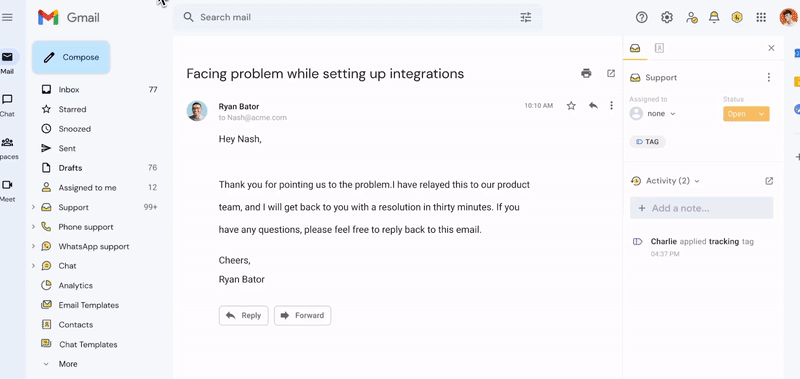
Key Features:
Hiver makes it super easy to manage support tickets right from Gmail and Outlook. Here’s how:
- Collision Detection: Hiver helps you avoid double replies by showing you when someone else is already handling a ticket.
- Email Delegation: You can easily assign emails (tickets) to your team members and track their progress in real-time.
- Analytics and Reporting: Hiver gives you the reporting and analytics insights you need to see how your team performs and spot any trends in support tickets.
- SLA and Automation: You can set up SLA rules to ensure timely responses and automate ticket routing to simplify your workflow.
- Multi-channel Support: With Hiver, you can handle queries from email, chat, Voice, knowledge base, and even WhatsApp—all without switching platforms.
- AI: Hiver’s AI bit Harvey helps you summarise emails, suggests templates and autocloses emails that don’t need attention.
“I love the ability to tag emails and route them accordingly. I also like that multiple team members can access different inboxes so that we can work together rather than just having one person manage each inbox.” – A G2 User writes
2. Freshdesk
Freshdesk is a popular help desk solution designed for businesses that need to manage support across multiple channels like email, chat, and social media. What caught my attention was its straightforward interface and ease of use—teams can get up and running in no time.
Freshdesk also offers a free plan, which makes it a solid option for small businesses looking to streamline their customer support without breaking the bank.
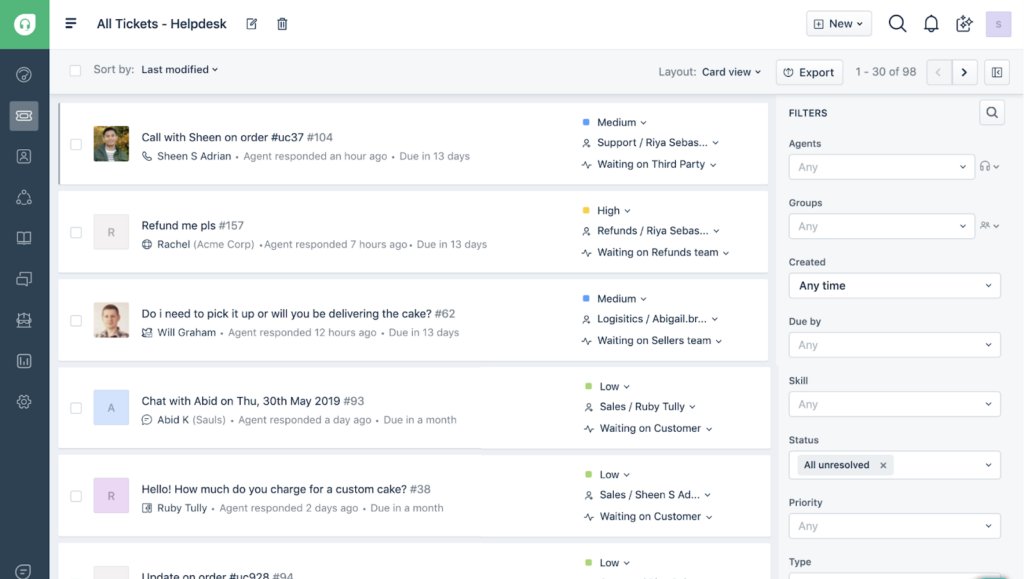
Key Features:
- It supports up to 10 agents (free plan), making it ideal for small teams.
- It manages customer conversations from one place, making it easier to track and respond to queries.
- It includes basic workflow automation to reduce repetitive tasks.
- It creates a knowledge base, helping customers find solutions on their own.
- It provides basic reporting to monitor team performance.
Drawbacks:
- The free plan offers basic automation tools, so upgrading may be necessary as your support needs grow.
- It has limited customization options in its free plan.
In a review on G2, one user mentioned, “The Freshdesk integration is rich, and some of its larger components might need additional setup or tech skills, which may be inconvenient for the teams without specific IT assistance or you have to pay additional fees for integration.”
See how Hiver compares to Freshdesk
3. Zendesk
Zendesk is another big player in the customer support space, known for its flexibility and customization options. It’s designed to handle everything from basic support to complex, multi-channel workflows.
The free trial for 14 days is a great way to explore its capabilities if you’re considering an upgrade in the future.
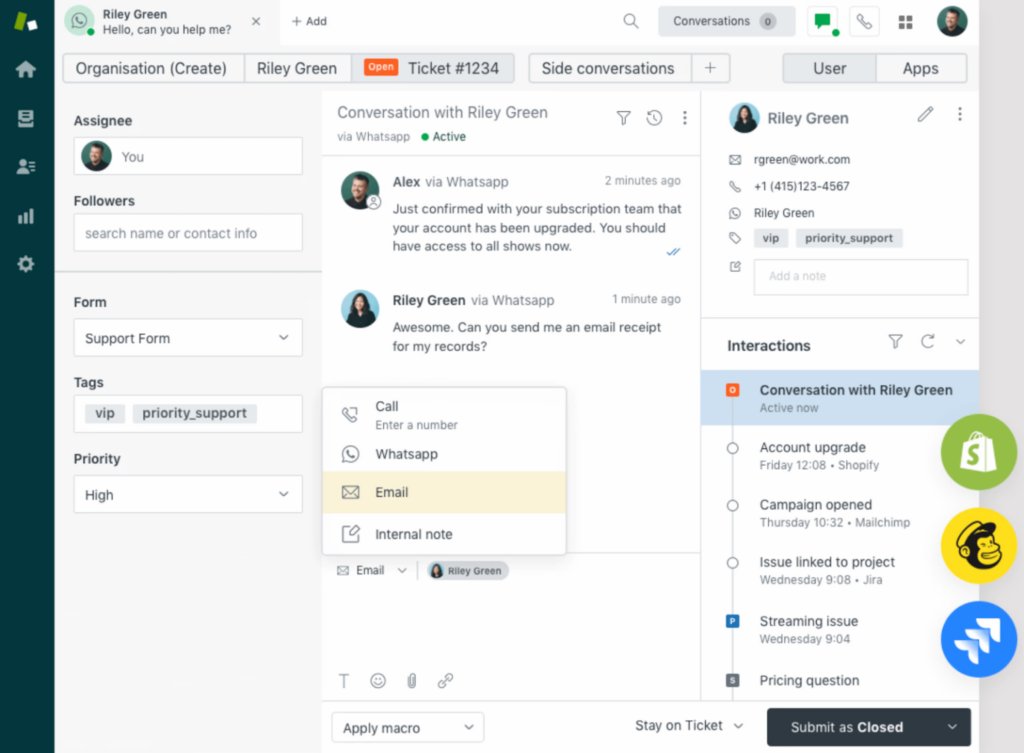
Key Features:
- It manages customer queries across email, chat, social media, and phone, all in one place.
- It builds tailored workflows, adapting to your team’s specific processes.
- It uses the Answer Bot to handle repetitive queries, allowing your team to focus on complex issues.
- It offers in-depth metrics to track and analyze your support team’s performance.
Drawbacks:
- Some users report that fully utilizing all features takes time, especially for larger teams.
- Its extensive features can be overwhelming for smaller teams just starting with customer support.
A user on Capterra shared, “AI is everywhere in the conversation, and the help desk software has been a game changer for us. Especially since we are global it has been essential when we don’t have live chat available after hours.”
See how Hiver compares to Zendesk
4. HappyFox
HappyFox focuses on simplicity and ease of use, making it a good choice for teams that want to improve efficiency without getting bogged down by complex systems.
What I found interesting is its strong emphasis on automation and ticket management, which can significantly reduce manual work.
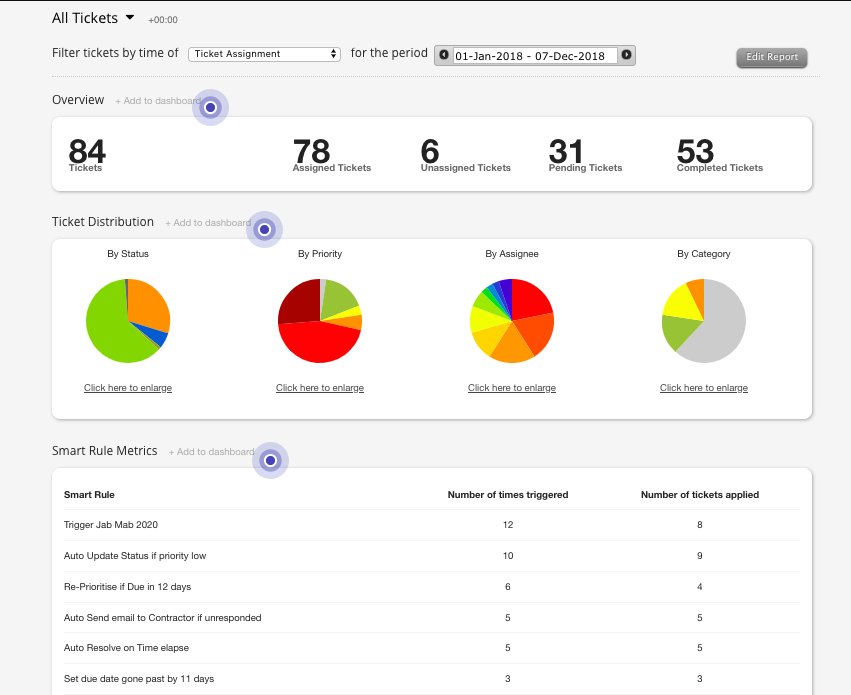
Key Features:
- It sets up custom ticket workflows that fit your team’s specific needs.
- It handles multi-channel support for customer queries from email, chat, and phone seamlessly.
- It builds a knowledge base for a self-service portal to reduce the number of incoming tickets.
- It provides reporting tools to track and analyze your team’s performance.
However, HappyFox’s free version comes with drawbacks:
- It has limited integration options, especially for smaller teams.
- The free version lacks some advanced features available in paid plans, which may limit functionality for growing businesses.
One G2 reviewer noted, “Happyfox is a great option for boosting productivity and happiness for customers and customer service reps. It was easy to integrate into our websites and become the backbone of our CS team“
5. ProProfs Help Desk
ProProfs Help Desk offers a user-friendly trouble ticketing system that focuses on collaboration. It enables teams to streamline their support operations by keeping all aspects of ticket management in one centralized location.
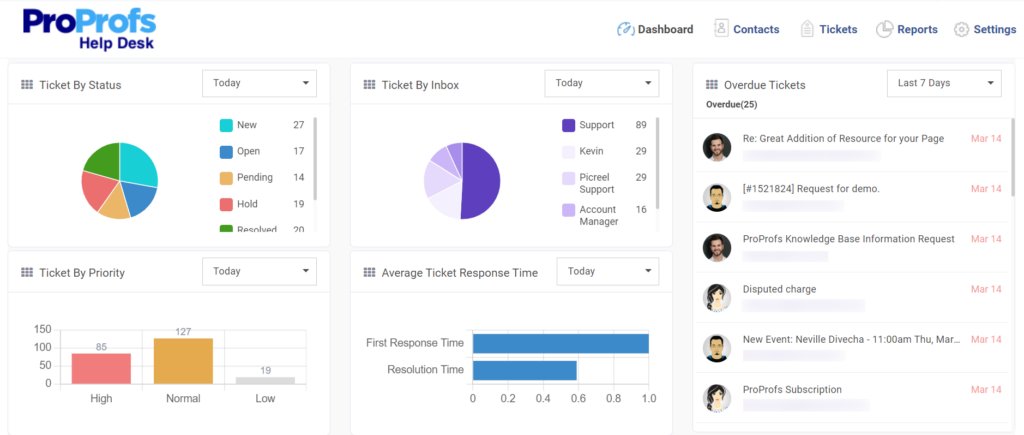
Key Features:
- It facilitates teamwork through a shared inbox, allowing agents to collaborate on tickets in real-time.
- It provides knowledge base integration, giving agents easy access to information for faster ticket resolution.
- It sets up custom ticket routing, helping you prioritize tickets based on urgency or department.
- It offers multi-channel support, with email and live chat options for customer interaction.
- It provides comprehensive reporting tools to track performance and identify areas for improvement.
Drawbacks:
- Some users may find the interface outdated and less appealing.
- Additional costs for certain features can add up quickly.
A G2 user mentioned, “In terms of features, this tool is a great bet. I am not much impressed with their integration options to third-party tools. This is something that needs to be improved.“
6. Spiceworks Help Desk
Spiceworks Help Desk is a completely free trouble ticketing solution perfect for small businesses or IT departments. It provides essential features without any hidden costs.
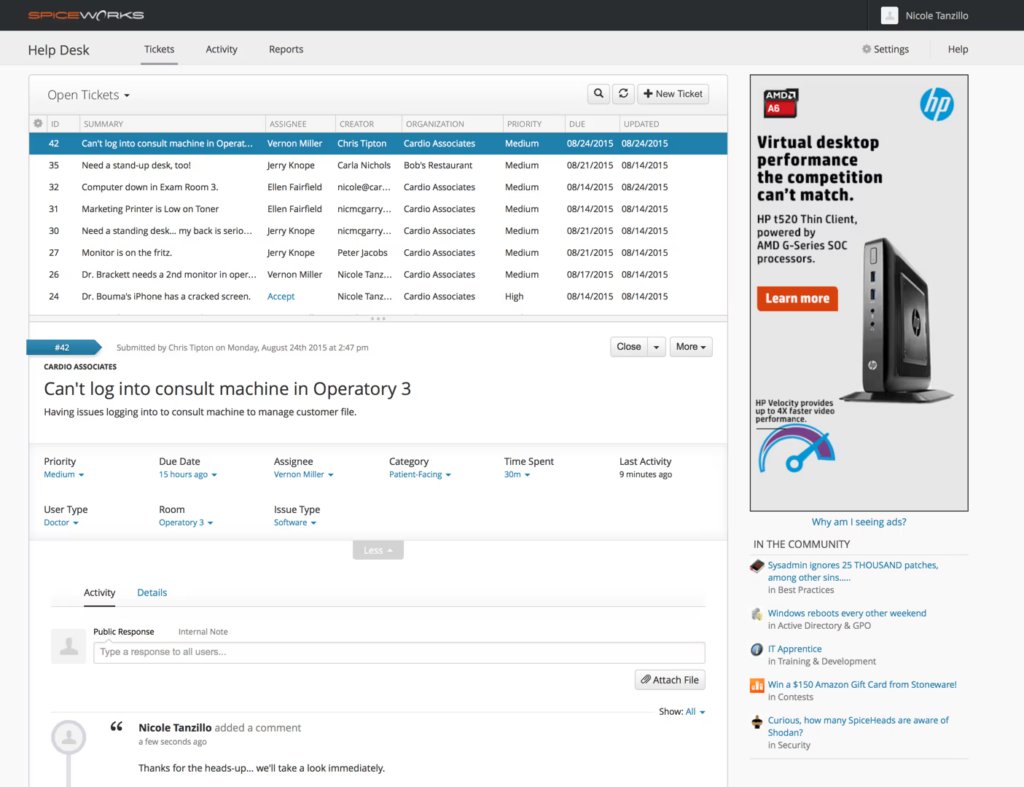
Key Features:
- It provides 100% free access, allowing you to use all basic functionalities without hidden fees.
- It simplifies ticket creation and management, making it easy to track and resolve customer requests.
- It integrates with Active Directory, streamlining user management and authentication.
- It offers reporting and analytics tools to provide insights into support performance.
- It allows multi-channel support, enabling customers to reach out via email or phone.
Drawbacks:
- It’s primarily designed for IT support, lacking features for broader customer service needs.
- It offers minimal customization, which can restrict teams needing tailored solutions.
As one Capterra user noted, “Few basics were missing like currency value of different countries will making a purchase invoice for the new bought devices.“
7. Zoho Desk
Zoho Desk is a ticketing solution that integrates seamlessly with other Zoho products. It’s an excellent option for businesses already within the Zoho ecosystem.
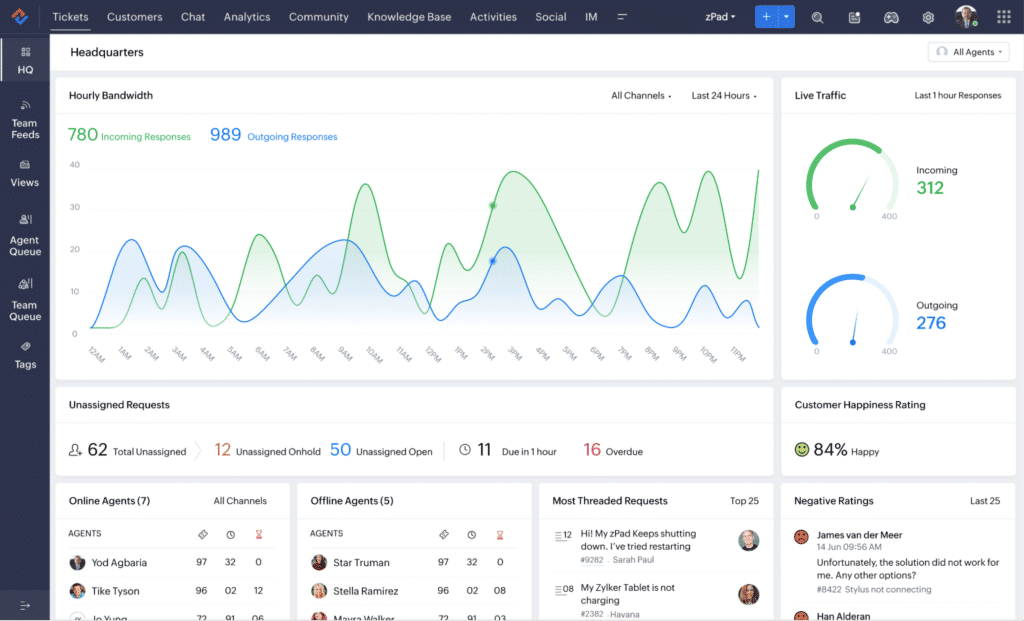
Key Features:
- It uses AI assistant (Zia) to automatically prioritize tickets and enhance workflow efficiency.
- It offers multi-channel support, engaging customers via email, chat, and social media.
- It sets up customizable workflows, adapting processes to fit your team’s needs.
- It provides reporting dashboards for insights into performance metrics and customer interactions.
- It integrates with Zoho CRM, creating a unified experience for customer data management.
Drawbacks:
- It can experience performance issues when handling large volumes of tickets.
- It may require multiple Zoho products for optimal functionality.
A G2 user remarked, “While Zoho Desk has some useful features, there are a few downsides that have impacted our experience. The biggest issue for us is the steep learning curve when it comes to advanced customization.“
8. HubSpot Service Hub
HubSpot Service Hub is a comprehensive customer service solution that integrates seamlessly with HubSpot’s CRM platform. It’s ideal for businesses seeking a unified approach to marketing, sales, and support.
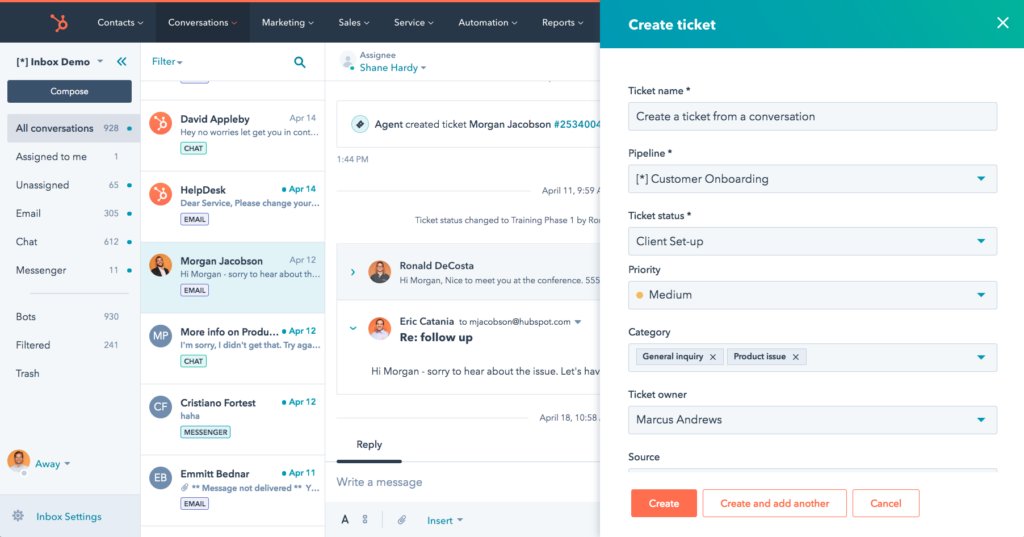
Key Features:
- It integrates CRM data with support tickets, providing enhanced customer insights.
- It enables automated ticket routing, ensuring tickets are directed to the right team members without manual intervention.
- It offers customer feedback tools, gathering and analyzing feedback through surveys.
- It allows the creation of a knowledge base, helping customers access resources for self-service.
- It offers multi-channel support, engaging customers across email, chat, and social media.
Drawbacks:
- The advanced features can be costly, making it more expensive as you scale.
- The basic ticketing functionality might feel limited compared to specialized tools.
A G2 user shared, “Having all of these tools in one place is really helpful to keep teams productive and give them access to the right information to support with support queries, but I wish the knowledge base was available on smaller tiers.“
9. Salesforce Service Cloud
Salesforce Service Cloud is an enterprise-level helpdesk solution designed for deep integration with Salesforce CRM. It’s tailored for larger organizations needing a highly customizable and scalable tool.
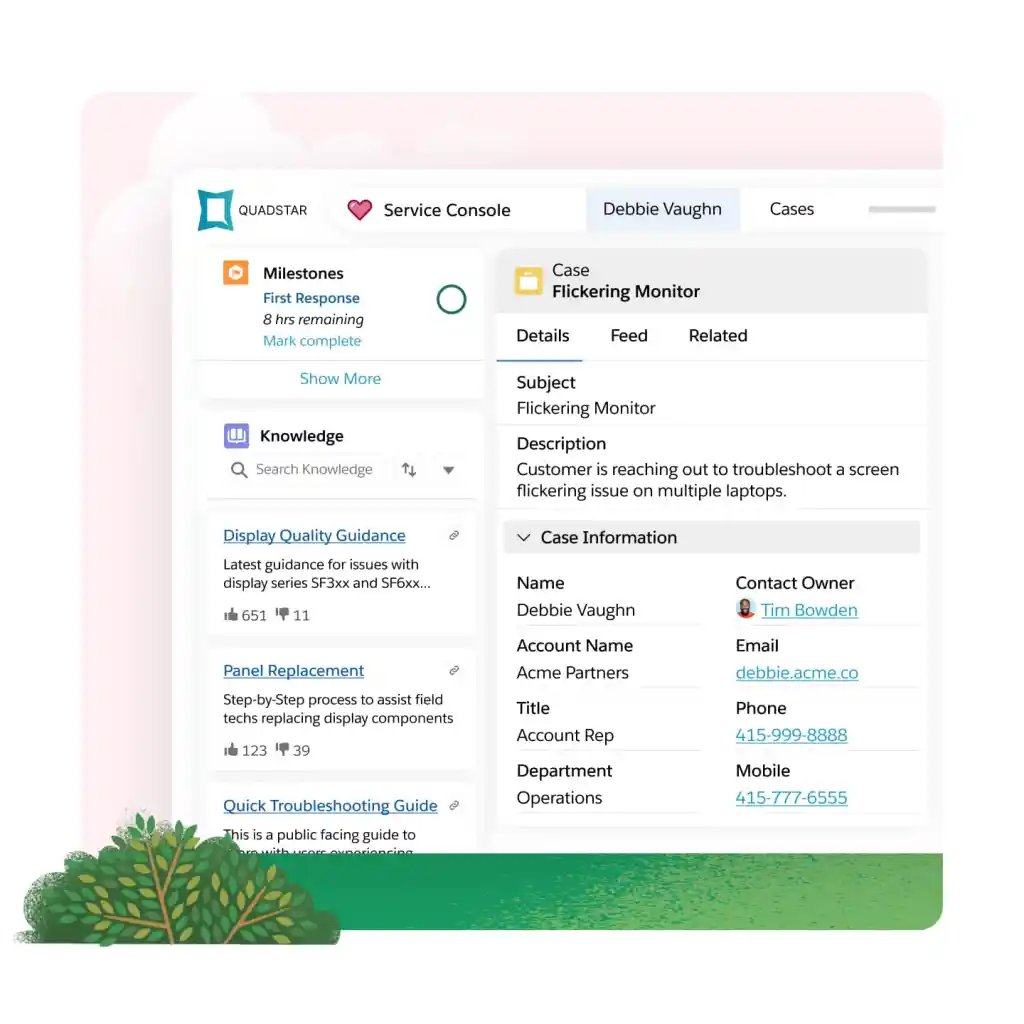
Key Features:
- It offers seamless Salesforce integration, allowing support teams to leverage existing customer data.
- It automates tasks with AI-powered workflows, improving efficiency.
- It provides omni-channel support, managing customer interactions through email, chat, phone, and social media.
- It creates customizable reports, tailored to fit your specific business needs.
- It integrates with third-party applications, offering extensive options for customization.
Drawbacks:
- The high cost can be prohibitive, especially for smaller businesses.
- The setup process can be complex and time-consuming.
A G2 user noted, “Honestly, it can feel a little confusing and clunky sometimes. There’s so much going on that it’s easy to get lost or spend too much time trying to find what I need. I wish some things were just simpler to use right out of the box!“
10. Jira Service Management
Jira Service Management is a specialized ticketing solution designed for IT teams, focusing on incident, change, and problem management. It’s well-suited for organizations needing structured technical support.
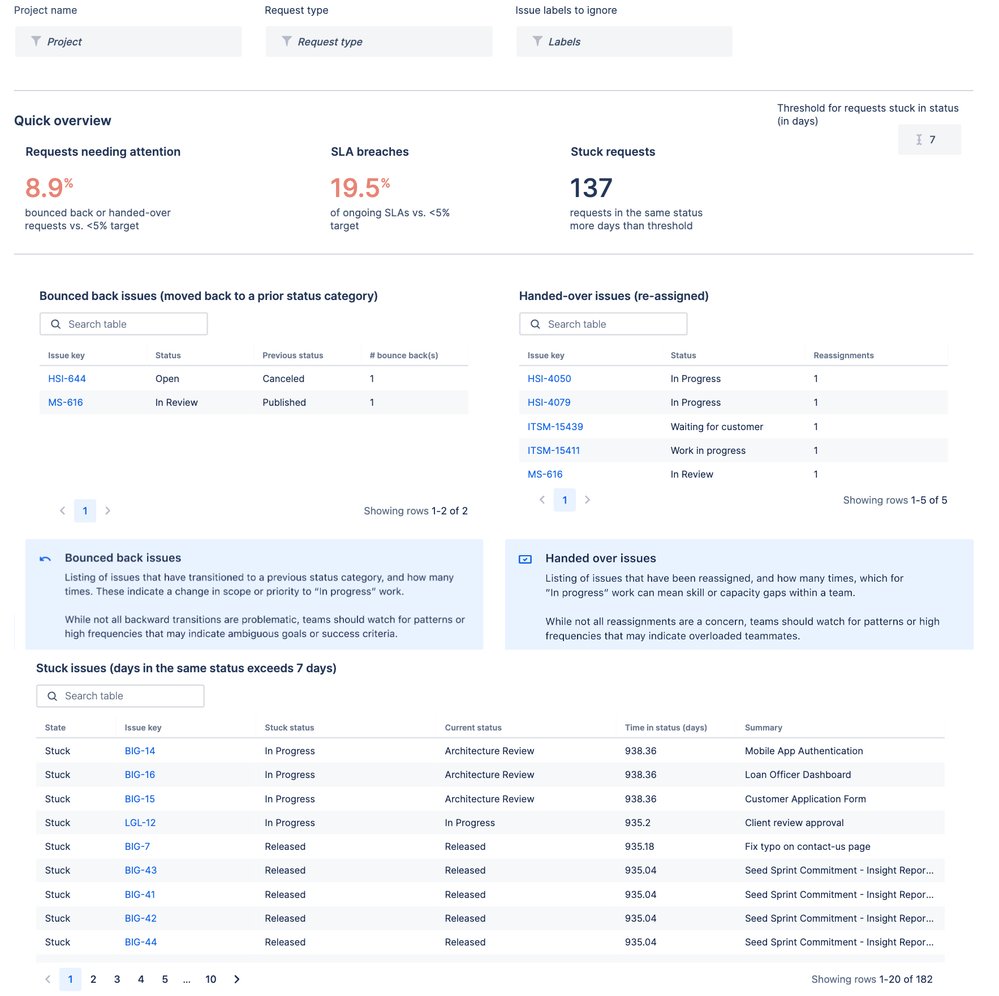
Key Features:
- It manages incident and change processes, making it easy to handle requests and transitions within IT.
- It sets up customizable workflows, allowing you to adapt ticket processes to your team’s needs.
- It integrates with Jira’s project management tools, connecting support and project tasks seamlessly.
- It tracks SLA compliance, monitoring service level agreements for accountability.
- It offers knowledge base integration, providing easy access to information for agents and customers.
Drawbacks:
- It has a steep learning curve, which can be challenging for non-technical teams.
- It’s primarily designed for IT support, lacking broader customer service features.
A Capterra user says, “Some users may have performance issues, especially when working with larger projects or those that include complicated procedures.“
Key Features of Modern Trouble Ticket Software
A solid trouble ticketing system comes with a handful of essential features to make your life easier. Let’s break it down:
1. Ticket Creation and Management
The core of any trouble ticket system is its ability to create, manage, and track tickets. It’s like a task manager but with a laser focus on customer issues. From the moment a request comes in, the system logs all interactions, changes, and status updates.
2. Automated Routing and Escalation
One of the biggest headaches for support teams is manually assigning tickets. That’s where escalation management through automated routing steps in. The software intelligently sends the ticket to the right agent or team based on the query. If something’s been sitting in the backlog too long, escalation rules kick in to ensure no issue lingers too long.
3. Knowledge Base Integration
Why answer the same questions over and over when you can have a handy self-service option for your customers? Many systems integrate with a knowledge base, so customers can find solutions on their own before creating a ticket.
4. Reporting and Analytics
Without data, how do you know what’s working? Modern trouble ticket software offers robust reporting features. You can track everything from response times to customer satisfaction, helping your team identify bottlenecks and continuously improve.
5. Multi-channel Support
Your customers are everywhere—email, chat, social media—so your helpdesk needs to be too. Multi-channel support means tickets can come from any platform, and they all funnel into one system. That way, nothing gets lost.
6. AI
AI is becoming a game-changer in trouble ticketing. Features like chatbots, predictive analytics, and automated responses reduce the load on your team, handle repetitive tasks, and offer personalized solutions faster.
Learn How to Create a Chatbot for Customer Service
Trouble Ticket Software vs. Traditional Support Methods
So, why not just stick to email or spreadsheets for managing customer requests? I get it—change can be hard, but let me explain why trouble ticket software outperforms traditional methods.
| Category | Traditional Support Methods | Trouble Ticket Software |
|---|---|---|
Efficiency & Effectiveness | Requests can easily be missed or forgotten. | Ensures every request is tracked and accounted for increasing efficiency. |
Agents manually manage emails or spreadsheets, prone to errors. | Automation helps teams focus on complex issues by reducing time spent on sorting requests. | |
| ROI (Return on Investment) | No formal ROI tracking; manual processes can result in inefficiencies. | Measured through hard metrics (reduced resolution time, fewer errors) and soft metrics (increased customer retention). |
More time spent managing repetitive tasks manually. | Reduces repetitive tasks, resulting in significant time and cost savings (e.g., saving 125 hours per month for 500 tickets). |
Save Time (and Money) with Easy-to-use Trouble Ticket Software
Investing in trouble ticket software is a no-brainer if you’re looking to streamline your support processes and boost customer satisfaction. With modern features like AI, multi-channel support, and robust analytics, it not only saves you time but also positively impacts your bottom line.
Hiver is perfect for businesses that rely on mail and want to manage customer support without switching tools or over-complicating their workflow.
Experience hassle-free customer support. Try Hiver today and see how it can transform your team’s efficiency. Start your free trial now!

































